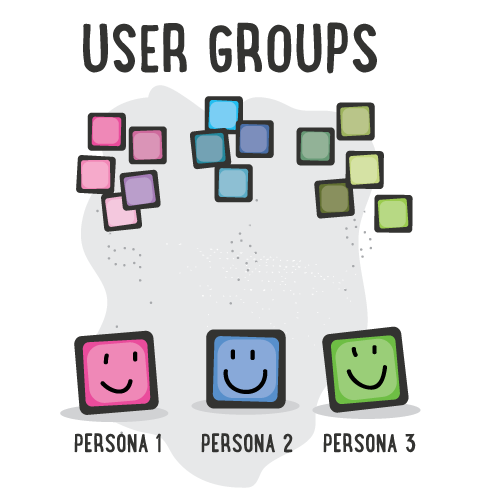A “Persona” is a fictional representation of an actual user and is applied in the early stages of product development or product redesign. Personas are vital to the success of a product because they drive design decisions by taking common user needs and bringing them to the forefront of planning before design has actually started. Personas provide the team with a shared understanding of users in terms of goals and capabilities. Once Personas are defined, going through a task analysis exercise with scenarios will offer an inexpensive way to test and prioritize features throughout the development (see lesson #2 in the blog Responsive Design: Getting started).

The Benefits of Persona Development
If you don’t think Personas are worth the trouble, think again. Benefits include:
- Personas give stakeholders an opportunity to discuss critical features of a redesign: This is especially helpful when you have multiple stakeholders with different ideas about what needs to be developed first. Using Personas to walk stakeholders through common interactions unveils frustrations and pain-points that will help clarify actual user priorities over the stakeholder’s personal wish list.
- They help team members share a consistent understanding of the user group: Personas take data and make the stories more compelling and fun, thus making them easier to remember and consider when the team is working towards a solution – together.
- Personas help designers develop informed wireframes and site architecture: Since Personas focus on the needs of the users, the team can walk through scenarios and determine optimal placement of content to specifically support the goal of the product. This is vital to the success of a website or application, and will save your client thousands of dollars and/or man-hours reworking a product after it’s launched (and “officially” tested by actual users).
- Personas provide a “face” to the user story, creating more empathy and understanding about the person using the product: This prevents designers and developers from applying their own mental models to the product design which may not align with actual user needs.
Collecting Data to Make Persona’s
Because Personas are fictional representations of actual users, they’ll only work if you fully understand who your users are – or will be. The more information you have, the better. Generally, 4-7 Personas (whittled down from several user groups) are sufficient to capture and document a majority of user requirements.
For projects that have several user groups, it’s helpful to group them into buckets with similarities, thus narrowing down the user groups into 4-7 specific profiles.

Depending on your project, you may have past users or you may not. Luckily, there are a variety of methods to collect data for either situation.
For existing users:
- User Interviews are by far the most useful. After several interviews you will notice patterns that emerge from each person, which should be included on the persona for that target audience group.
- Reviewing help desk calls and website feedback can also yield important feedback. So can surveys and questionnaires, focus groups, and purchase records.
- Existing clients can submit surveys, which are another cheap and effective way to collect information about users who are in various locations. Sometimes it’s helpful to offer incentives like a gift card, or a chance to win something for participating in the survey.
For non-existing users:
- Use original research by brainstorming personas using the product goals and purpose as a starting point.
- Leverage stakeholders for more information on who they believe their customer base will be. They may be able to provide contacts to work with.
Once you have this information, you can pull together the Persona stories for each user group. For this part, you only need your imagination.
What Makes Up a Persona?
Personas generally include the following key pieces of information:
- Persona Group (For example; sales manager)
- Fictional name (For example; “Government Gail”)
- Job titles and major responsibilities
- Optional: A quote this person would say that defines them.
- Demographics such as age, education, ethnicity, and family status
- The goals and tasks these people are trying to accomplish on your website or application
- Pain points or frustrations
- Technical experience and background
- Their working environment: Are they in an office on Wall Street with a lot of distractions or do they work in a library?
- Casual photos: Using realistic photos is always best. Photos from dating sites or even pulling from an image search is better than using photos from a stock photography website. Jonathan Abbott even created a website full of photos that can be used for persona development efforts!
A variety of Persona templates are available online. These can be used as-is or modified to better fit your products user needs and experiences. Here are just a few places you can download or review persona templates:
- http://www.romanpichler.com/tools/persona-template/
- http://usabilitytools.com/features-benefits/persona-creator/
References:


